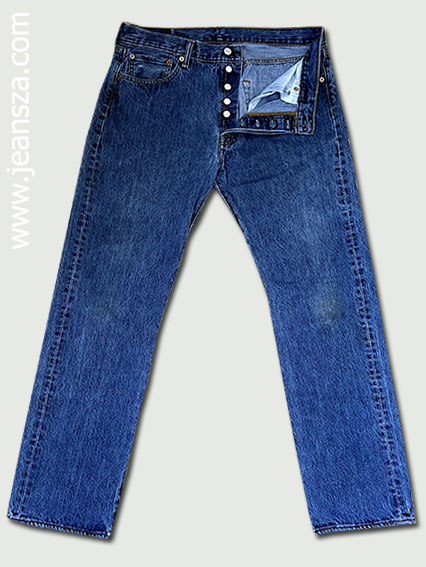Levi's decoding the 555
The 555 button stamp is more than just a production code; for vintage enthusiasts, it represents one of the most significant and fascinating chapters in the Levi's 501 story. Your compiled information from various sources is a remarkable find, solving a complex mystery about this particular factory. It wasn't just a regular production site—it was a true "secret lab" for Levi's innovation.
555: The Name of a Pioneer and Experimenter
The factory identified by the 555 button is the historic Valencia Street plant in San Francisco, which was rebuilt after the devastating 1906 earthquake. This makes it one of the oldest in the company's history. While this is a known fact, the puzzling lack of clear production records for many decades raises questions about its true role.

Your discovery of a pair of 501s with a 555 button produced in October 1978 is crucial. This is hard evidence that this factory was the first to use a three-digit button code, well before other factories began their transition in late 1979 or early 1980.
A Technological Trailblazer: The Switch to Open-End Denim
Even more surprising is the care tag on that specific pair, which notes a 10% shrinkage rate and the phrase "No soak." This is a tell-tale sign of open-end denim, which contradicts the conventional belief that the official transition from ring-spun to open-end denim occurred in July 1980.
-
Experimental Factory: The fact that the 555 factory was producing open-end denim as early as late 1978 suggests it served as a "prototype factory" or an R&D center for Levi's. Its purpose was likely to test new production processes before they were rolled out to other, larger factories. If an experiment succeeded, production would expand, as it did with the 6/524 factory in 1980.
The End of a Legend: "The Last Vintage Levi's"
Your finding about the 501 with a red-line selvedge and a 555 button, produced in September 1985, adds another layer of uniqueness to this factory.
-
Yellow Bar-Tack: The 555 factory was the only one to use yellow thread for the bar-tack stitching on the back pockets, instead of the standard black thread used by other factories during that era. This unique detail makes these jeans highly sought after by collectors.
-
The Last Red-Line Selvedge in the USA: The fact that the 555 factory was still producing red-line selvedge jeans in 1985, long after other factories had stopped, has earned it the nickname "the last vintage Levi's in the world." This signifies the end of an era of American-made quality and craftsmanship.
Conclusion: The Heart of Innovation
In summary, the 555 button's early appearance, its role as the first factory to experiment with open-end denim, and its final production of red-line selvedge jeans all point to the critical role of the Valencia factory. It wasn't just a production site; it was a hub of innovation and a driving force behind the brand's evolution.
These special characteristics, along with the fact that Levi's chose this factory to produce their first LVC reproductions in the 90s, solidify the 555 button as more than just a number. It's a symbol of pioneering spirit, leadership, and a steadfast commitment to preserving the quality and history of the world's greatest jeans.
- Button #555 Original (1978 - 1985)
- Button #555 Re-production 110 year capital E (1992 - 1996)
- Button #555 LVC (1996 - 2002)







